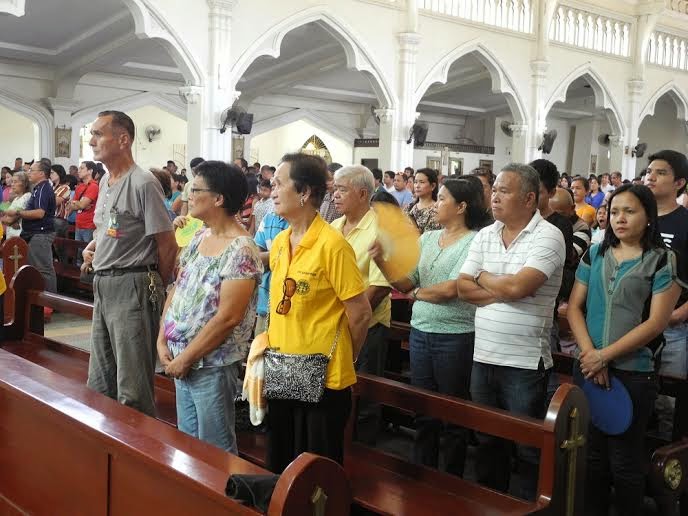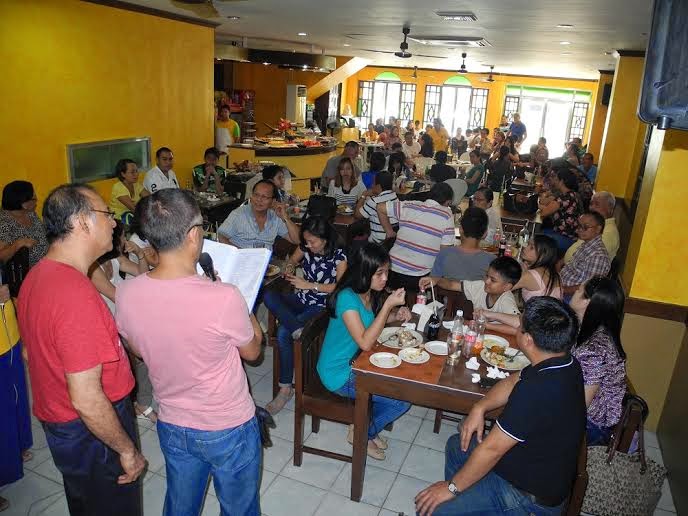
CAGAYAN DE ORO CITY – El Circulo Zamboangueño de Cagayan de Oro celebrated 58 years of Fiesta Pilar with a mass at the Saint Augustine Metropolitan Cathedral followed by a “comida communal” at La Ilongga restaurant here.
Over a hundred Zamboangueños and their families joined the recent festivities hosted by spouses Manny and Josy Aliñabon at their restaurant. Manny is a graduate of Ateneo de Zamboanga High School and originally hails from Margosatubig town in Zamboanga del Sur province.
“To all our Zamboangueño friends, whether living in our out of Zamboanga, we extend our warmest greetings in the celebration of the feast day of Nuestra Sra. Virgen del Pilar.” said Cagayan de Oro City Mayor Oscar S. Moreno is a message texted to the group. “We pray for Her continuing guidance and abundant blessings. Cheers.”
Chito Potenciano, coordinator of the half-century old association of families, who originated from Zamboanga, also known as “The City of Flowers,” said the Circulo also held the traditional nine-day novena for Nuestra Señora Virgen del Pilar de Zaragoza, the city’s patron saint at La Ilongga.
As has been traditionally practiced by El Circulo for the past 52 years, a Comida Comunal followed the celebration of the mass at the Saint Augustine Metropolitan Cathedral. The veneration of the Lady of the Pillar as Zamboanga City’s patroness is closely tied with its historic Fort Pilar.
Perhaps no other institution has played as big a role in shaping Zamboanga City’s Christian Hispanic Heritage as Fort Pilar, and has made it the sole city in Asia that can rightfully lay claim to the moniker Latin City.
Started in 1635, it was built at the instance of Jesuit missionaries and Bishop Fray Pedro of Cebu to ward off Moro pirates. Originally called Real Fuerza de San Jose (Royal Fort of Saint Joseph), its cornerstone was laid by the Jesuit engineer Fray Melchor de Vera, on June 23, 1635 on orders of then Spanish Governor of the Philippines Juan Cerezo de Salamanca.
This event marks the founding of Zamboanga as a city, formerly known as Samboangan. However, subsequent events related to the construction of the fort have sealed its place in the Chabacano heritage of the city which it unique among similar local cultures in the Philippines and Asia.
Renamed the Real Fuerza de Nuestra Señora del Pilar Zaragoza (Royal Fort of Our Lady of the Pillar of Zaragoza) in honor of the patron saint of Spain, Our Lady of the Pillar, it was also the venue of many Marian apparitions, most notably on December 6, 1734 when she appeared to a soldier and again on September 21, 1897 when she appeared over the Basilan Strait and saved the city from a tsunami following a strong earthquake.
Tradition reveals the Virgin Mary appeared to a soldier on December 6, 1734, at the gate of the city. Not recognizing her, the soldier asked her to stop. Upon recognizing her, he fell down to his knees. A relief of the Our Lady of the Pillar was subsequently placed above the eastern wall of the fort making it an outdoor shrine with an altar for praying.
Old folks said the image actually mysteriously appeared in its present site after a pirate attack on the fort while a procession in her honor was being held.
On September 21, 1897, a strong earthquake struck the western region of Mindanao. According to the people who witnessed it, they saw the Virgin Mary floating in mid-air over the Basilan Strait, with her right hand raised to stop the onrushing waves, and saved the city from a tsunami. (Mike Baños)
Like Us on Facebook: https://www.facebook.com/
Follow Us on Twitter: https://twitter.com/
Read Our News on: http://www.mindanaoexaminer.




